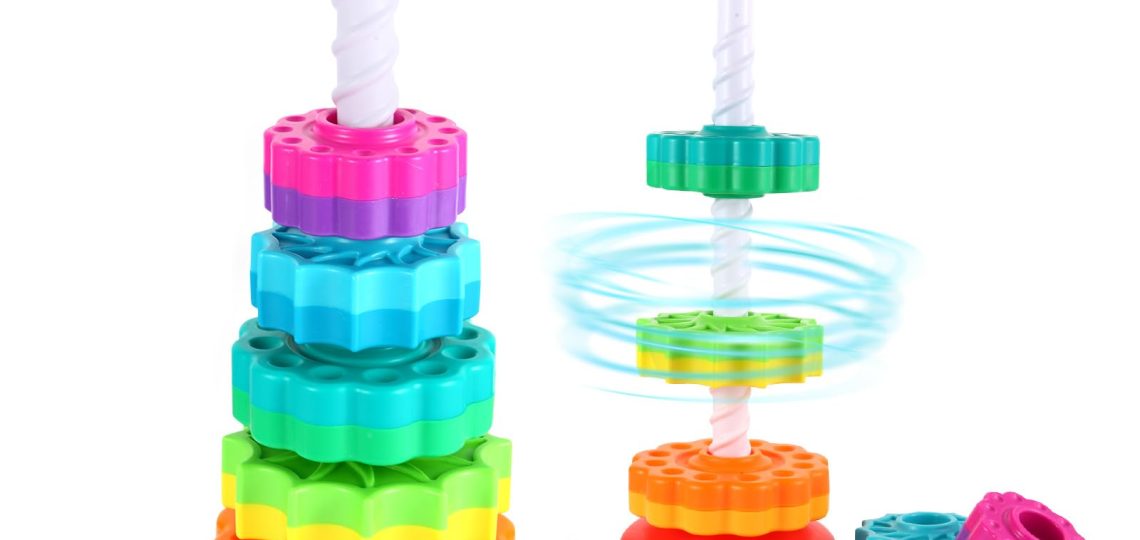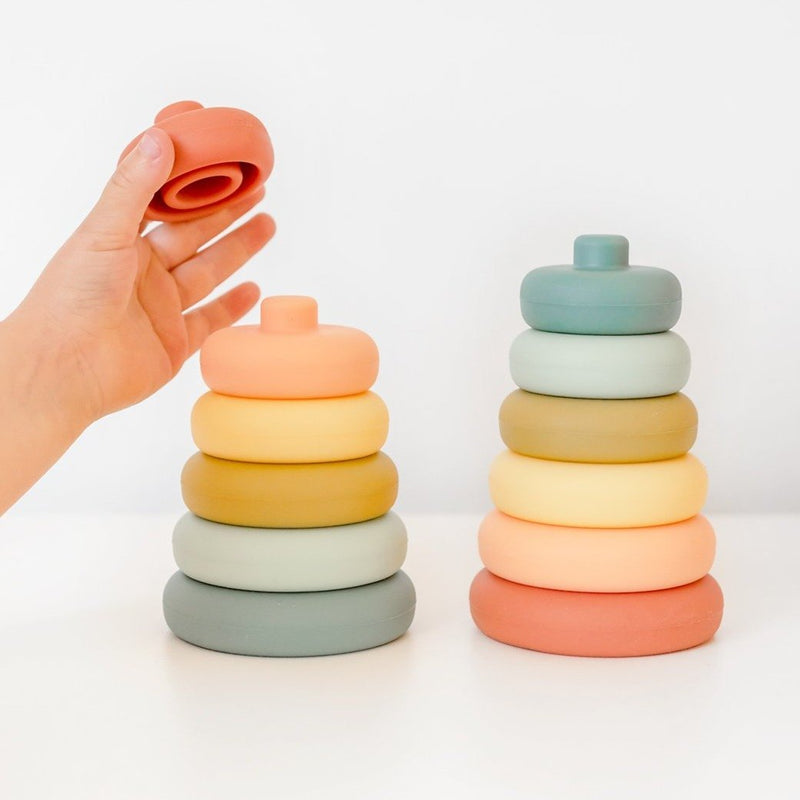
Stacking Tower Toy: Enhancing Child Development
The Benefits of Stacking Tower Toys for Toddlers
Playing with stacking tower toys offers a wealth of benefits for toddlers during a critical period of growth and development. Here are a few key advantages:
- Motor Skills Development: As toddlers grasp, move, and stack the pieces, they refine both gross and fine motor skills. These toys require the coordination of hands and fingers, enhancing dexterity.
- Cognitive Enhancement: Stacking tower toys encourage problem-solving and understanding of spatial relationships. Toddlers learn to recognize different sizes and shapes, which is foundational for math skills later on.
- Hand-Eye Coordination: Building towers requires toddlers to align their movements with what they see. This practice strengthens hand-eye coordination, an essential skill for various activities in life.
- Color and Shape Recognition: These toys often come in various colors and shapes, helping toddlers identify and differentiate between them. This simple recognition plays a crucial role in cognitive development.
- Creativity and Imagination: There’s no one way to play with a stacking tower toy. Children use their creativity to stack and build, which fosters imagination and can lead to spontaneous learning.
- Sense of Achievement: Successfully stacking pieces gives toddlers a sense of accomplishment. This boost to their self-esteem encourages them to take on new challenges.
- Social Interaction: Playing with stacking tower toys can be a shared activity. It supports learning to take turns, sharing, and communicating effectively with peers or caregivers.
Incorporating a stacking tower toy into your toddler’s playtime not only brings joy but also lays the groundwork for essential developmental milestones. As they play, toddlers are unwittingly preparing for a lifetime of learning and growth.
Key Skills Developed Through Stacking Toys Play
Stacking tower toys are not just for fun; they’re educational tools that help toddlers develop key skills. These skills are vital for their overall development and learning process. Let’s delve into some of the main skills that toddlers hone while playing with stacking tower toys:
- Problem-Solving Abilities: Figuring out how to stack the rings from largest to smallest requires thinking and strategy. Toddlers start to understand cause and effect as they see what happens when they put a ring in the right or wrong place.
- Fine Motor Skills: Picking up, holding, and placing the rings help toddlers develop their fine motor skills. These are crucial for tasks like writing and buttoning up clothes later in life.
- Balance and Coordination: To build a tower that doesn’t topple over, toddlers must align the pieces carefully. This improves their balance and coordination.
- Language Skills: As parents and caregivers describe the colors, shapes, and sizes of the stacking toy’s pieces, toddlers absorb new words, enhancing their language capabilities.
- Patience and Focus: Stacking tower toys require focus and patience. Toddlers learn the value of persisting with a task to enjoy the reward of a completed tower.
- Numerical Understanding: As toddlers count the rings or blocks, they begin to develop a basic understanding of numbers and quantity.
These skills contribute significantly to a toddler’s growth. By engaging with a stacking tower toy, children are setting the foundations for academic learning and everyday tasks they will encounter as they grow.
How to Choose the Right Stacking Tower Toy
Choosing the right stacking tower toy for your toddler is essential. It ensures safety and an enriching play experience. Keep the following pointers in mind:
- Safety First: Look for non-toxic materials and sturdy construction. Avoid small parts that can become choking hazards.
- Appropriate Size: Ensure the size of the toy is suitable for your toddler’s hands. Pieces should be easy to grasp and manipulate.
- Engaging Colors: Select a toy with bright and varied colors to captivate your child’s attention and stimulate visual development.
- Educational Value: Opt for stacking tower toys that offer more than just stacking. Some include numbers, letters, or shapes on the pieces for added learning.
- Growth Potential: Choose a toy that can provide a challenge as your toddler grows. Adjustable difficulty levels prolong the toy’s usefulness.
- Durability: A good stacking tower toy can withstand rough play. Choose one that is built to last, so it can be a staple in your child’s playtime.
- Peer Reviews: Read reviews from other parents. Their insights can be valuable in assessing the toy’s real-world performance.
Remember, playing with the right stacking tower toy can significantly enhance your toddler’s development. So, take your time and choose wisely.
The Role of Stacking Toys in Early Learning Settings
Stacking tower toys play a critical role in early learning environments. They offer unique benefits that educators and caregivers can harness to promote developmental milestones among young children. Here are key reasons why these toys are valuable in early learning settings:
- Encourages Group Play: Stacking toys often attract groups of children, promoting social skills like sharing and cooperation.
- Teaches Sequential Thinking: Children learn to stack rings or blocks in order. This teaches them sequence and order.
- Enhances Concentration: With stacking toys, kids need to concentrate to balance each piece. This builds their attention span.
- Introduces Science Concepts: Early lessons in physics emerge as children see how gravity affects their stacked creations.
- Boosts Problem-Solving: When a tower falls, children learn to identify and correct their stacking strategy, improving problem-solving skills.
- Inspires Classroom Activities: Teachers can create thematic activities using stacking toys. They can sort by color or size, count pieces, and more.
- Accessible Learning: Stacking toys are simple and require no reading, making them inclusive educational tools for all learning levels.
In these settings, stacking tower toys are more than playthings. They are educational aides that support child engagement and active learning. They help lay the foundation for later academic success in areas like math, science, and language.
Stacking vs. Other Types of Developmental Toys
Stacking tower toys stand out among developmental toys for toddlers. They offer unique learning experiences compared to other toys. Here’s how stacking toys compare:
- Focus and Precision: Unlike plush toys, stacking requires precision. Toddlers learn to carefully place each piece, improving focus.
- Spatial Understanding: While puzzles develop similar skills, stacking toys often require considering height and balance.
- Active Engagement: Action figures may spark the imagination but stacking toys involve physical interaction and coordination.
- Sequential Logic: Building blocks let kids construct freely, but stacking toys teach sequence by requiring an order for the pieces.
- Problem-Solving Differentiation: Board games introduce rules and turn-taking, whereas stacking tower toys focus on individual problem-solving.
- Gravitational Concepts: Unlike drawing or painting, stacking toys demonstrate the concept of gravity in a tangible way.
- Motor Skills: Craft activities like beading improve fine motor skills, yet stacking also integrates gross motor skills.
Each type of developmental toy has its place in a child’s growth. Stacking tower toys are particularly beneficial for developing a unique set of cognitive and physical skills. They train toddlers in areas that other toys might not address as directly. For parents and educators, it’s important to include a variety of toys, including stacking tower toys, to support all-round development.
Creative Ways to Incorporate Stacking Tower Toys in Playtime
Integrating stacking tower toys into your toddler’s playtime can be both fun and educational. Here are some creative ways to make the most of these versatile toys:
- Color Matching Games: Encourage your child to match colors as they stack. This reinforces color recognition.
- Size Sorting Challenges: Have toddlers sort pieces by size before stacking. It’s a great way to teach size differentiation.
- Imaginative Play: Use the pieces as characters or part of a story. It boosts imagination and story-telling skills.
- Counting Exercises: Count the pieces with your child as they play. This introduces basic math concepts.
- Balancing Games: Challenge your toddler to balance pieces on uneven surfaces. It enhances problem-solving skills.
- Timed Building: Set a timer and ask your child to build a tower before time runs out. This adds excitement and teaches about time.
- Sharing Sessions: Play with siblings or friends to learn about sharing and cooperation.
- Height Measurement: After building a tower, use a tape measure to check its height. This can be a fun introduction to measurement.
By blending these playful strategies into your child’s routine, you can maximize the learning potential of stacking tower toys. They don’t just stack; they offer numerous ways to learn and grow.
Safety Tips for Stacking Toy Usage
When it comes to children’s toys, safety is always the top priority. Here are some essential safety tips to keep in mind while toddlers enjoy stacking tower toys:
- Check for Hazards: Before playtime, always inspect the toy for any broken parts or potential hazards.
- Supervised Play: Keep an eye on your child while they play to ensure they use the toy safely and correctly.
- Age-Appropriate Toys: Make sure the stacking tower toy matches your toddler’s age and skill level to prevent frustration and potential mishaps.
- Quality Materials: Choose toys made from durable and non-toxic materials to reduce the risk of allergies and injuries.
- Clean Toys: Regularly clean the toy to keep it free from germs and bacteria that can harm your child.
- Proper Storage: After playtime, store the toy in a safe place where smaller pieces can’t be lost or pose a choking hazard.
- Teach and Demonstrate: Show your toddler how to stack and play properly, guiding them towards safer play habits.
- Avoid Overstacking: Teach your toddler the limits of how high they can stack safely to prevent the toy from toppling over.
Following these simple yet effective tips ensures that your child has a fun and secure experience with their stacking tower toy.
Recommended Age Ranges and Progression with Stacking Toys
Selecting a stacking tower toy that is appropriate for your child’s age is crucial for their safety and developmental progress. Here is a general guide to help you choose the right toy as your child grows:
- Ages 6-12 Months: Start with soft, easy-to-grip stacking cups. At this stage, babies are just learning to grasp and sit up.
- Ages 12-18 Months: Introduce larger stacking rings that are simple to hold and stack. Children begin to develop hand-eye coordination and recognize basic colors and shapes.
- Ages 18-24 Months: Look for stacking toys with more rings or pieces to increase the challenge. Toddlers will enjoy sorting by size and color, enhancing their problem-solving skills.
- Ages 2-3 Years: At this age, consider stacking tower toys with numbers, letters, or shapes to introduce early academic concepts.
- Ages 3 and Above: Offer more complex stacking games, like those incorporating balance and sequencing, to refine motor skills and cognitive abilities.
As children progress, it’s important to gradually increase the difficulty level of the stacking tower toy to keep them challenged and engaged. Remember to always supervise playtime and ensure the toy’s complexity is suitable for their developmental stage. By following these age-appropriate progressions, stacking tower toys can be a valuable tool in aiding your child’s growth year after year.


